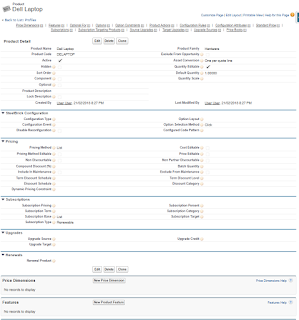A bundle is a product itself , also component of bundle maybe sold separately or maybe not.
For example if you are selling computer case with all components like CPU , RAM, VGA, Mother Board . maybe you would like to sell CPU separately or just via the bundle product.
In order to set a product as bundle you need to specify the options on the product or component of the product , this can be set on Product Option .
Consider you have a product called "Dell Desktop Computer" , you need to define options but before that just see if you can categorize those options, so sales users can choose those options easier. these categories are like Processor, RAM, ... as there are multiple CPUs that can be selected when selling this product.
If you need to create those category click on "New Product Feature" on the product layout.
Then go ahead and all other required features, Number field on product option is going to determine the order of displaying features in Quote line configuration.
It's a best practice to set the number like 10, 20 ,30 so if later on you would like to change the order, you don't need to update the order of all features.
Now go ahead and add new product option to this product like a CPU(this product should be already available in your product list)
The most important field in product option is Type , it has the following values
- Component : Quantity is depending on its parent, and it needs to be required.
- Accessory : This is a dependent option but Quantity is not depending on its parent.
- Related Product : Fully independent to its parent (this can be used for cross sell or upsell)
- None: similar to component
In product option you can also specify the required filed and min and max number of product option in the bundle. Unit price , if this is set this will override the value from pricebook.
Then next option that can be set is "Option Constraints", by using this you can specify the required logic for selecting a product option.
Quote Line Visibility on Product Option
If there is a bundle product and you don't want to display the component as a separated line in quote line editor after bundle gets configured then , set Quote Line Visibility to Document Only.
These are the different values for Quote Line Visibility:
- None
- Editor Only (Quote Line Editor | QLE)
- Document Only (Quote Template)
- Never















